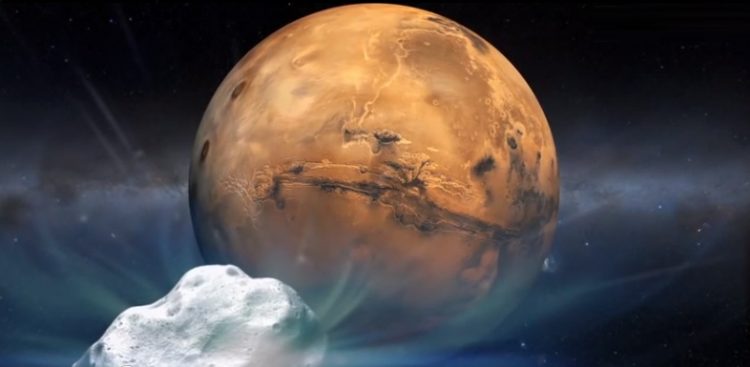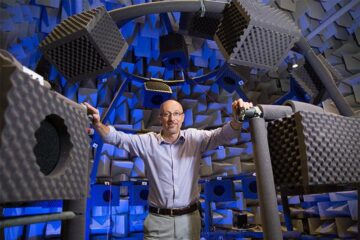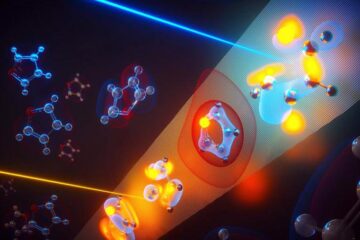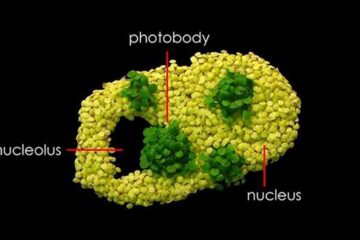Swedish instrument will make measurements when a comet passes Mars

Comet Siding Spring and Mars Artist's impression: NASA
“Noone has before made measurements when a comet passes so close by a planet”, says Associate Professor Mats Holmström at the Swedish Institute of Space Physics in Kiruna, Sweden.
The comet Siding Spring will pass by Mars at a distance of only 140 000 km, about a third of the distance from the Earth to the Moon, by way of comparison. The outer parts of the comet's thin atmosphere will collide at high speed (56 km/sec) with the atmosphere of Mars.
“We expect that gas and dust from the comet will impact on the Martian atmosphere, which will be temporarily heated and will expand”, says Mats Holmström. “We should be able to see that with our instrument”.
The Swedish Institute of Space Physics (IRF) has Principal Investigator responsibility for the satellite instrument ASPERA-3 which is an international collaboration with participants from some 15 research groups from about 10 countries. ASPERA-3 on board the measures how charged particles from the sun, the so-called solar wind, influences the atmosphere of Mars. Mars Express was lauched by the European Space Agency (ESA) and has been orbiting Mars since 2003.
More information:
Assoc. Prof Mats Holmström, scientist, IRF, tel. +46-980-79186, +46-70-211 1138, mats.holmstrom*irf.se
Rick McGregor, information office, IRF, tel. +46-980-79178, +46-70-276 6020, rick.mcgregor*irf.se
http://www.irf.se/?dbfile=Mars%20Express%20and%20ASPERA-3&dbsec=Administrati… Instrument ASPERA-3 and satellite Mars Express
http://blogs.esa.int/mex/category/comet-siding-spring/ Pages on Comet Siding Spring: ESA
http://mars.nasa.gov/comets/sidingspring/%20%20%20%20 Pages on Comet Siding Spring NASA
Media Contact
All latest news from the category: Physics and Astronomy
This area deals with the fundamental laws and building blocks of nature and how they interact, the properties and the behavior of matter, and research into space and time and their structures.
innovations-report provides in-depth reports and articles on subjects such as astrophysics, laser technologies, nuclear, quantum, particle and solid-state physics, nanotechnologies, planetary research and findings (Mars, Venus) and developments related to the Hubble Telescope.
Newest articles

Why getting in touch with our ‘gerbil brain’ could help machines listen better
Macquarie University researchers have debunked a 75-year-old theory about how humans determine where sounds are coming from, and it could unlock the secret to creating a next generation of more…

Attosecond core-level spectroscopy reveals real-time molecular dynamics
Chemical reactions are complex mechanisms. Many different dynamical processes are involved, affecting both the electrons and the nucleus of the present atoms. Very often the strongly coupled electron and nuclear…

Free-forming organelles help plants adapt to climate change
Scientists uncover how plants “see” shades of light, temperature. Plants’ ability to sense light and temperature, and their ability to adapt to climate change, hinges on free-forming structures in their…





















